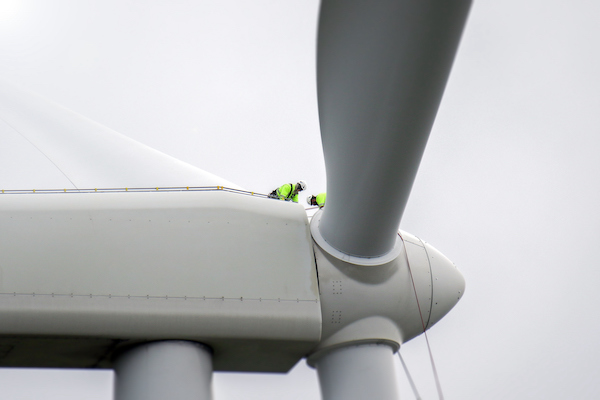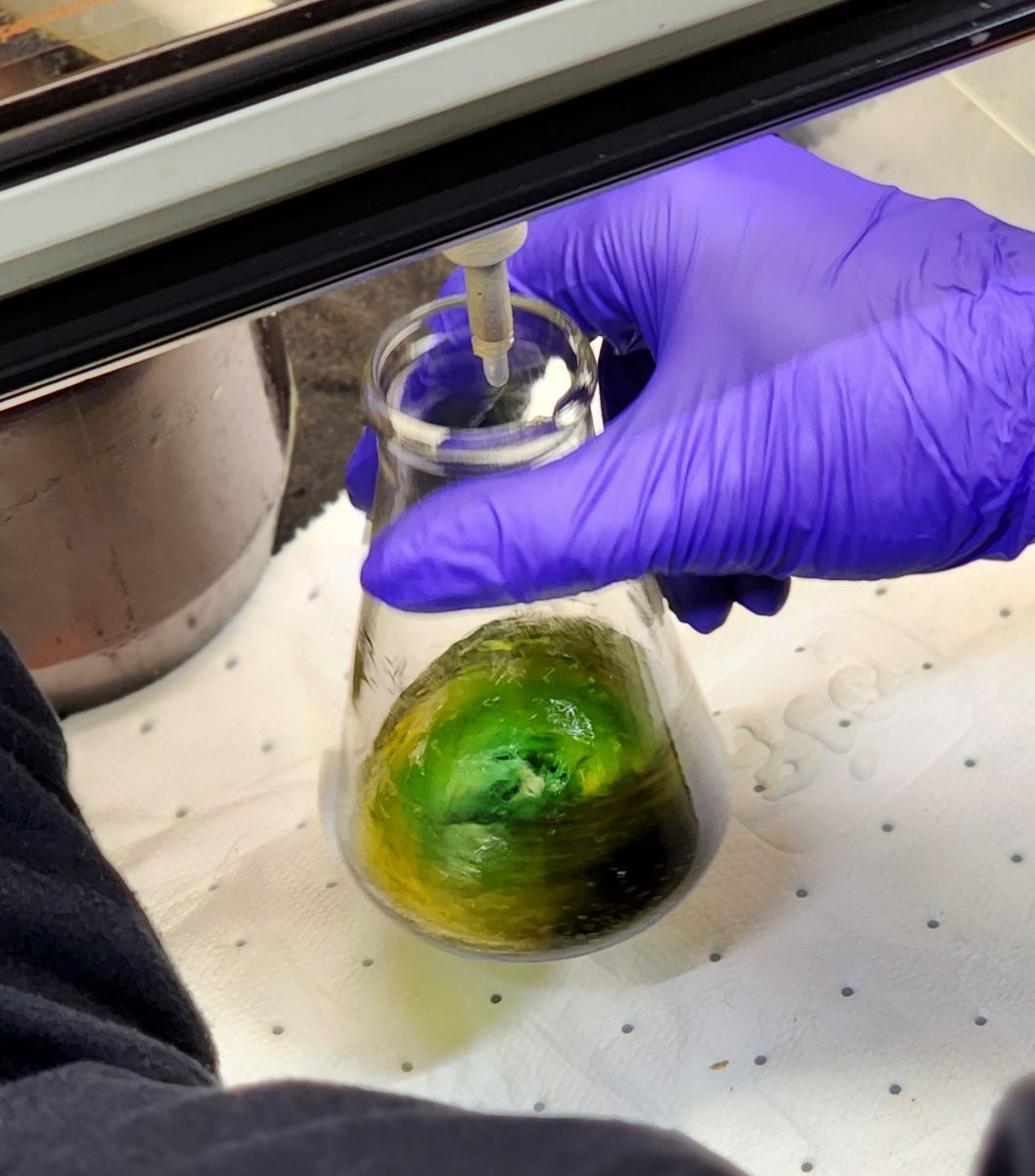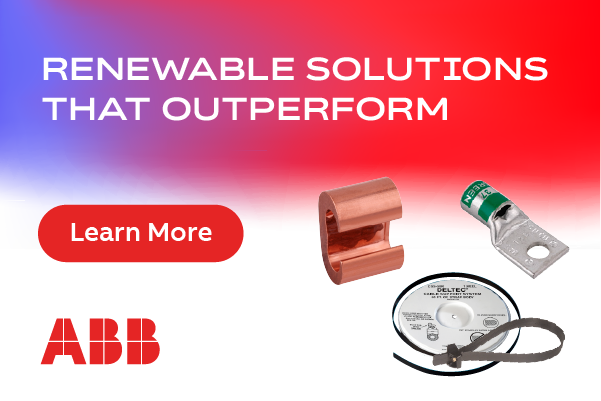Ward Off Wind Turbine Failure
Hurricane-force winds, raging seas, and scorching deserts are just a few of the harshest environmental conditions that wind turbines need to withstand. To ensure dependability, oil analysis and filter debris analysis (FDA) are an integral component of most wind turbine reliability programs.
Offshore wind turbines fail, on average, 8.3 times each year. Among the reasons for failure are contaminants such as wear, rain and sand, and moisture intrusion. With regular lubricant analysis and periodic FDA, much of this can be caught and remediated before damage occurs.

Typical oil condition monitoring practices in the wind industry include a regular review of the main turbine gearbox oil and the hydraulic system fluid for basic property analysis, degradation contamination, and wear. Much of the oil sampling and testing is performed not only to verify the condition of both the oil and equipment, but also to satisfy the requirements of the system warranty. Approximately 75 percent of customers sample and test the oil every six months. The remaining 25 percent review the oil on a more frequent basis, at least every three months.
Oil and Grease Analysis
While there is some value to occasional oil and grease testing, it’s really trend-based analysis that will minimize equipment downtime, streamline maintenance, and protect warranty claims.
Components that should be tested:
- Turbine gearbox
- Hydraulic pitch system
- Drive gears: pitch and yaw
- Bearings: main shaft, generator, pitch and yaw
Tests should include:
- Water Content (Karl Fischer Water) D6304
- Acid Number (TAN) D974
- Viscosity D445
- FTIR Spectroscopy E2412
- Particle Count (ISO 4406:99)
- Ferrous Wear Concentration
- Analytical Ferrography
- Wear, Contamination, and Additive Metals (Elemental Spectroscopy) D5185
Reliability personnel should expect a detailed report that includes information on lubricant condition during operation and wear/contamination — type, source and degree. All of this should be accompanied by technical interpretation.
Filter Debris Analysis
Surprisingly, 95 percent of the wear debris that may provide useful information about the condition of the turbine never makes it into an oil sample — it’s contained in the filter. This is due to the fact that wind turbines use increasingly finer filtration to ensure long lifecycles. The only particles that can be analyzed in conventional oil analysis are those that are already present in the oil and smaller than the filter's pore size, or those that are introduced into the oil before filtering. Once the filter is discarded, any potential insights from its analysis are lost.

Justifications for filter analysis:
- Catch the wear debris caught in the filter that an oil sample would miss
- Benchmark metallic wear generation rates of machinery components
- Determine the size and quantity of abnormal metallic wear debris
- Determine specific elemental makeup of wear debris captured in filters
- Develop no-go/go limits for critical assets
- Complement an existing oil analysis program
By analyzing filter debris, the lab can identify pollutants and wear indicators that are either removed from the oil by the filter, or too large to be detected by traditional elemental analysis.
Suggested Method
The lab should clean and examine wind turbine filters methodically, using a proven FDA technique. The self-contained FDA instrument should employ an automated filter washing procedure to completely and repeatably remove all inorganic debris from the filter. The filter should then be placed in the system wash chamber, where fluid and compressed air are used to clean the filter of any debris. The filter debris-containing wash should then be collected and analyzed.
While there are logistical issues with FDA for wind turbines (the most obvious being the size of the filter and the difficulty handling it), experts recommend testing all used filters before they are discarded. Consider that the filter element holds a wealth of historical diagnostic information that has been accumulated over the entire service life interval.
Lab Services
In addition to comprehensive oil analysis and filter debris analysis for wind turbines, other lab tests for wind turbines may include:
- Material Identification Analysis There are times when a sample pulled from a lubrication system has concerning anomalies. In those cases, routine oil analysis is not enough. Material Identification Analysis (MIA) is a forensic-level service that includes an in-depth investigation designed to identify the root cause of a problem or the origin of foreign material. The analysis employs various analytical and sample preparation techniques that lead to recommendations for resolution.
.jpg)
- Compatibility Analysis Mixing incompatible lubricants is a common problem. It creates issues such as excessive foaming, formation of precipitates or deposits, and loss of key performance characteristics like water separability. ASTM D 7155 Standard Practice for Evaluating Compatibility of Mixtures of Turbine Lubricating Oils should be used as the guideline for compatibility testing.
- Varnish Potential Analysis Varnish is an insoluble film that coats the internal components of machinery. This can devastate wind turbine operations. The debilitating effects of varnish are well documented. The complexities associated with detecting varnish potential render routine oil analysis ineffective in reporting varnish. Varnish Potential Analysis testing monitors the contaminants responsible for varnish, and alerts customers on when to implement appropriate, corrective actions before costly damage occurs, and there is unnecessary downtime.
Ignoring regular lubricant and periodic and FDA analysis can be costly. Here are just some of the pricetags associated with replacing the following wind turbine components:
- Blade: $391,000-$547,000
- Blade bearing: $62,500-$78,200
- Gearbox: $628,000
- Generator: $314,000
- Electronic modules: $16,000
For all machinery —especially expensive machinery such as wind turbines — the cost of condition monitoring pales in comparison to the cost of replacing damaged and destroyed components, not to mention the associated downtime. Wind turbine operators should look for a lab that can efficiently process and analyze routine samples, and produce a straightforward report that quantifies machine health, lubricant condition, and contamination.
 Michael Barrett is Vice President at Eurofins TestOil, where he has worked for 30 years. He led the Eurofins TestOil effort into researching varnish 15 years ago, ultimately developing a solution for helping customers understand varnish potential in their equipment. Today, he is responsible for directing the Eurofins TestOil marketing and sales efforts, working closely with customers to help them develop successful oil analysis programs. He has also spoken at conferences as an expert on a variety of oil analysis-related subjects.
Michael Barrett is Vice President at Eurofins TestOil, where he has worked for 30 years. He led the Eurofins TestOil effort into researching varnish 15 years ago, ultimately developing a solution for helping customers understand varnish potential in their equipment. Today, he is responsible for directing the Eurofins TestOil marketing and sales efforts, working closely with customers to help them develop successful oil analysis programs. He has also spoken at conferences as an expert on a variety of oil analysis-related subjects.
Eurofins TestOil | testoil.com
Author: Michael Barrett
Volume: 2023 May/June








